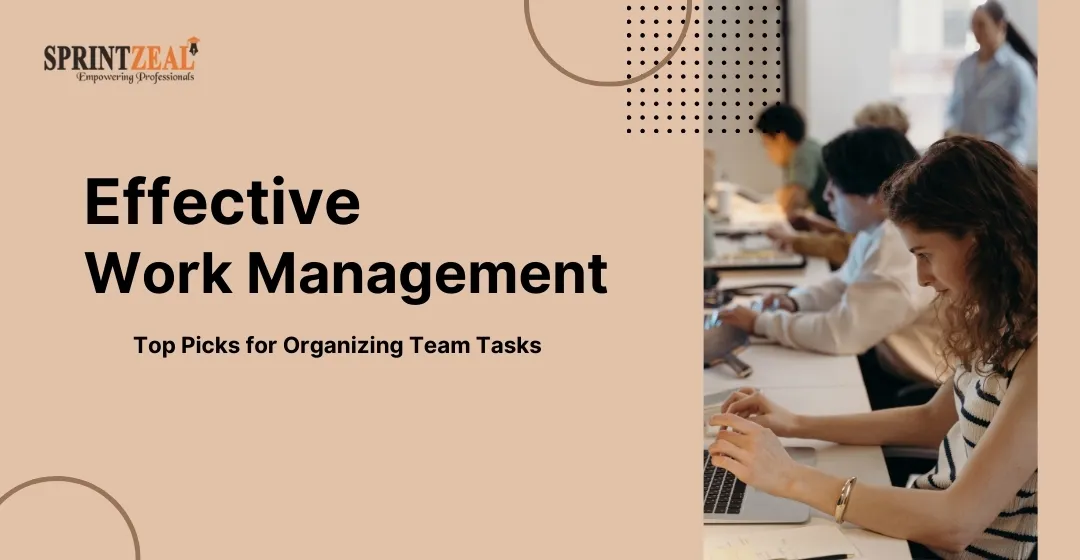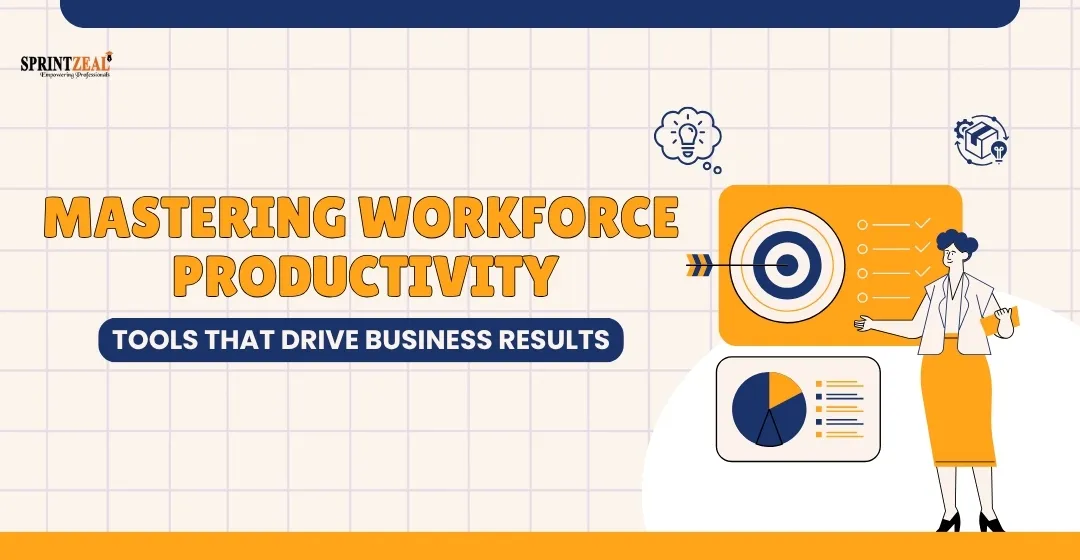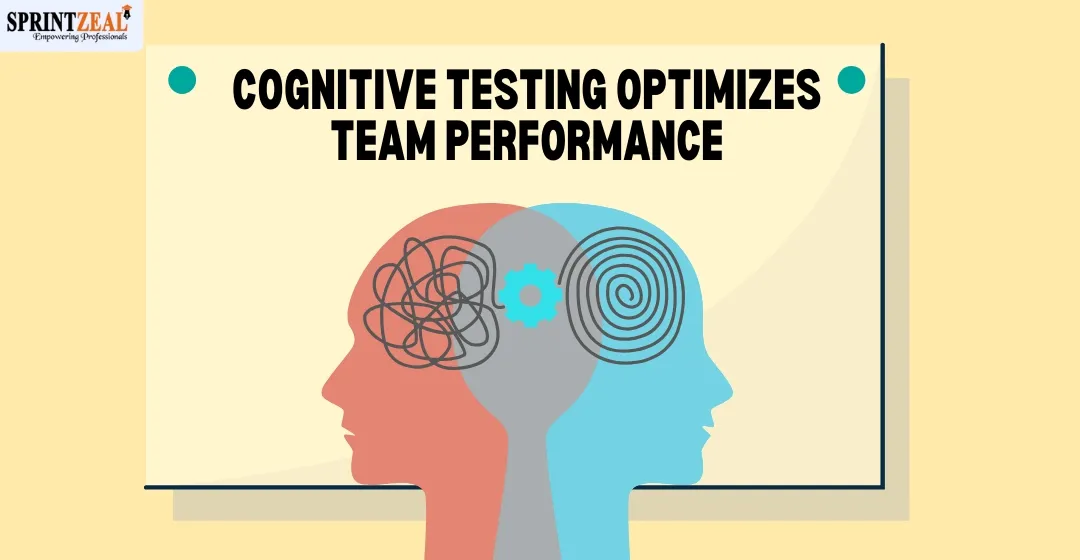Managing Work More Effectively: Top Picks for Organizing Team Tasks
-
 By Sprintzeal
By Sprintzeal - Published on Apr 29 2025

Effective task organization and productivity are essential for team success. By implementing smart prioritization techniques and efficient time-tracking systems, teams can streamline their workflows and accomplish more.
Whether it’s through methods like the Eisenhower Matrix or time-blocking, the right approach makes all the difference. These strategies, along with modern project management tools, provide the structure and insights needed to optimize performance.
Learn how task prioritization and tracking can unlock the full potential of your team.
Table of Contents
Task Organization Best Practices
Smart prioritization methods and time tracking help you become skilled at organizing tasks. Project management software simplifies these processes with specialized features and automated processes. Many teams and professionals also rely on coaching tools to support productivity, streamline client work, and create more effective systems.
Priority Setting Methods
The Eisenhower Matrix splits tasks into four categories based on urgency and importance. Tasks fit into:
- Important and urgent (immediate action required)
- Important but not urgent (schedule for later)
- Urgent but not important (delegate)
- Not important or urgent (eliminate)
The ABCDE method grades tasks with letters. A-tasks just need immediate attention, B-tasks are high priority, C-tasks are medium importance, D-tasks are low priority, and E-tasks can be eliminated.
The Most Important Task (MIT) technique picks one to three vital tasks each day. Teams can focus on activities that directly affect business goals with this method. The Impact-Effort Matrix assesses tasks by comparing potential results with needed resources.
The MoSCoW method gives clear categories for complex projects:
- Must do: Non-negotiable tasks
- Should do: Important but flexible tasks
- Could do: Optional tasks if time permits
- Won't do: Tasks to eliminate
Time Tracking Basics
Time tracking is the foundation of efficient task management. Teams can save many hours by using time tracking software with automated monitoring. Project managers use this data to:
1. Identify bottlenecks early
2. Adjust resource allocation
3. Improve future estimates
4. Monitor team capacity
Project managers should make time tracking a daily habit. Accurate time logs help learn about:
- Task completion rates
- Resource utilization
- Performance patterns
- Workload distribution
Time tracking data shows which tasks use too many resources. Project management software displays visual charts and reports that show:
- Estimated versus actual time spent
- Task distribution across projects
- Deadline adherence rates
- Team member availability
Teams work better with live progress monitoring. Modern project management software has features like:
- Automated timers
- Task-specific tracking
- Detailed activity logs
- Performance analytics
Time data helps spot overworked team members before burnout happens. Project managers can use this information to:
- Redistribute workload effectively
- Plan future projects accurately
- Coach team members
- Simplify processes
Teams can make decisions based on solid data through proper time tracking. This information helps with resource planning, budget forecasting, and performance assessment. Combining effective prioritization methods with systematic time tracking creates strong foundations for completing projects successfully.
Making Teams More Productive
Small daily work habit changes lead to big productivity gains. Teams that use AI-powered tools see a 90% boost in productivity. Organizations can help their teams reach full potential through smart adjustments and good performance tracking.
Quick Wins for Better Efficiency
The quickest way to improved productivity is automation. Teams can focus on strategic work, while software tools handle repetitive tasks. Project management software creates simplified processes through:
- Automated client onboarding processes
- Integrated data collection systems
- Standardized operational procedures
- Structured communication channels
Time-blocking proves to be a powerful efficiency booster. Teams show higher completion rates when they dedicate specific time blocks to focused work. Themed days offer another option - teams can assign entire days to specific projects or clients to reduce context switching.
Project managers should set up no-meeting days or half-days. Team members need uninterrupted time for deep work. "Do not book" calendar blocks help protect these focused work periods.
Regular career development talks boost motivation. Team members show more engagement when managers connect them with mentors, push for promotions, and support learning opportunities. Affordable professional growth comes through free webinars and online courses.
Measuring Team Progress
Teams need clear metrics and consistent evaluation methods to track performance. Using SMART goals leads to 20-25% improved work performance. Key areas to watch include:
1. Quality consistency across team members
2. Task completion rates
3. Goal achievement percentages
4. Customer feedback scores
The best progress measurement combines multiple approaches. Time tracking software shows how teams use their working hours. These tools reveal:
- Total project completion time
- Work distribution patterns
- Productivity variations by location
- Resource utilization rates
One-on-one meetings play a vital role in performance discussions. Research shows 85% of employees believe trust is essential for high-performing teams. These talks should cover:
- Current progress updates
- Skill development needs
- Resource requirements
- Workload balance
The "Keep, Start, Stop" framework benefits teams greatly. This method creates positive discussions about:
- Successful behaviors to maintain
- New practices to implement
- Inefficient habits to eliminate
Performance measurement helps spot areas that need improvement. Team metrics compared against industry standards reveal gaps and opportunities. Meaningful improvements take time to show results.
Analytical insights drive sustainable progress. Project management software like Function Point provides detailed analytics on:
- Task completion trends
- Resource allocation patterns
- Collaboration effectiveness
- Individual contributions
Teams should celebrate both wins and calculated failures. This practice gets more and thus encourages more innovation and risk-taking while maintaining high standards. Regular feedback that recognizes accomplishments boosts team creativity.
Conclusion
By combining effective task prioritization and time tracking, teams can achieve remarkable improvements in productivity. The right tools and methods create a clear path to success, ensuring tasks are completed efficiently and goals are met.
Regularly assessing progress and adjusting strategies fosters continuous growth, keeping teams motivated and on track. With a commitment to smarter work habits and precise tracking, organizations can take full control of their projects and drive sustained success.
Stay focused, organized, and strategic, and watch your team’s performance thrive.
Subscribe to our Newsletters
Popular Programs
Trending Posts
Mastering Workforce Productivity: How Time and Communication Tools Drive Business Results
Last updated on Jun 12 2025
Top Reasons Why Binding Format Matters in Training Manuals
Last updated on Jun 25 2025
The 3 AI-Powered Email Warmup Tools You Should Consider for Outreach
Last updated on Aug 26 2025
How Cognitive Testing Can Optimize Agile Team Performance
Last updated on Sep 17 2025
Self-Introduction for Interview: Tips & Best Examples
Last updated on Mar 4 2025
Top 10 Productivity Training Courses for Workplace
Last updated on May 23 2024
Categories
- Other 62
- Agile Management 57
- Cloud Computing 50
- Project Management 170
- Big Data 58
- Business Management 79
- Digital Marketing 73
- IT Service Management 29
- Programming Language 47
- AI and Machine Learning 67
- IT Security 108
- Quality Management 77
- IT Hardware and Networking 25
- Microsoft Program 4
- Workplace Skill Building 11
- Risk Management 9
- Information Security 8
- Leadership and Management 7
- Corporate Training and Development 1
Trending Now
Top 10 Productivity Training Courses for Workplace
ArticleSelf-Introduction for Interview: Tips & Best Examples
Article6 Best LMS for Employee Training Your Team Won’t Hate
ArticleMastering Workforce Productivity: How Time and Communication Tools Drive Business Results
ArticleTop Reasons Why Binding Format Matters in Training Manuals
ArticleThe 3 AI-Powered Email Warmup Tools You Should Consider for Outreach
ArticleTop Team Leader Job Interview Questions & FAQs
ArticleHow Cognitive Testing Can Optimize Agile Team Performance
ArticleStreamlined Success: Blending Digital Tools and Physical Planners for Optimum Productivity in 2025
ArticleDesigning Training Slides to Simplify Complex Concepts
Article






